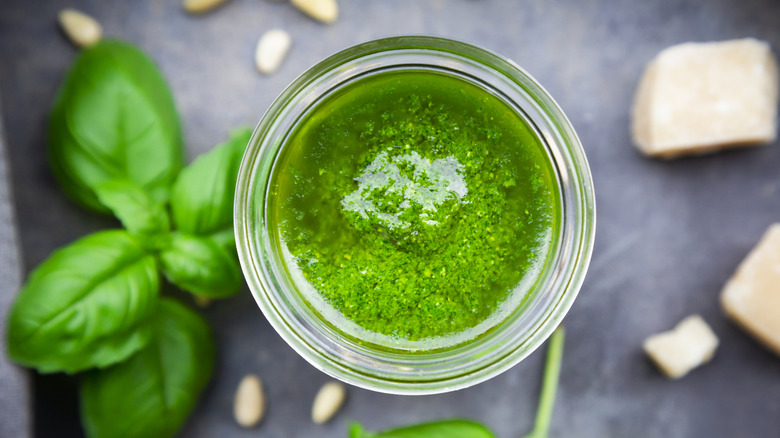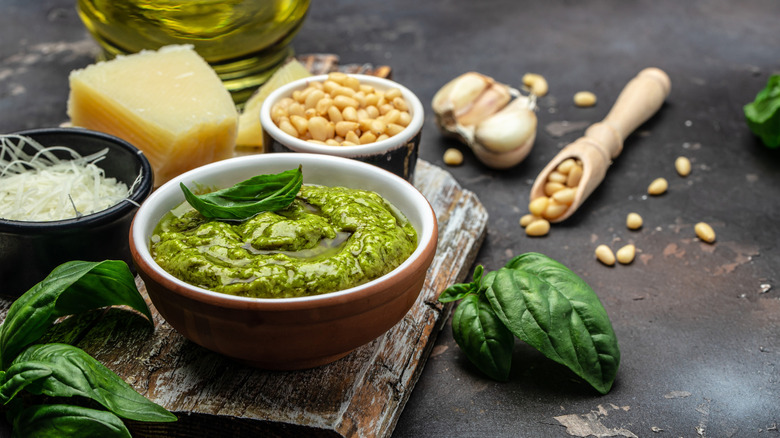Expert Tips For The Perfect Homemade Pesto
If you want to find out all of the most important details that you need to know to make the best homemade pesto, then look no further. Daily Meal spoke with expert Makenna Held, the CEO of RecipeKick, The Courageous Cooking School, and Steward of La Peetch, to find out all of the best tips.
Making pesto at home can be a bit trickier than you would think. This is because making pesto requires emulsion. For anyone unfamiliar, emulsion refers to the process of bringing together two liquids that do not mix together naturally. For pesto specifically, the water in the basil is at odds with the olive oil. Held explains, "Emulsions require a delicate balance of an emulsifier (cheese and garlic in pesto) holding together the fats (oils/nuts) with the acid and liquids of the greens."
With that in mind, you need to use the right equipment. Pesto can be made in a number of ways — including in a mortar and pestle — as well as in a blender or food processor. Held prefers the food processor over the blender. She says, "While both work well, many blenders will overprocess the final result. A small, two-cup max-sized food processor with a push-button pulse is my preference."
What you can — and can't — adjust in the ingredient list
A typical pesto recipe calls for pine nuts, basil, garlic, olive oil, and Parmesan, as well as, often, lemon juice. So is there any room for customization or adjustments? For one, the type of nut can be adjusted — some pesto recipes opt for walnuts or almonds. There are even versions without any nuts at all for those with an allergy to enjoy — these pesto versions may use sunflower seeds as the replacement. There's wiggle room with the cheese too. Held says, "Pecorino and very dry French cheese like Mimolette work too." They note, however, that soft cheeses will not blend well with the other ingredients, so avoid those.
According to Held, the acid is key. They explain, "You cannot skip the acid, but it doesn't have to be lemon! Limes and any vinegar will work too!" She advises you to taste test to make sure that you don't add too much acid. For the garlic, you can roast it or not — Held says it comes down to personal preference. Held suggests roasting it for a milder garlic flavor, but keeping it raw for a "sharper, spicier" garlic flavor.
All in all, it's important to taste as you go. Held says, "I love to start a batch, pulse it together, give it a taste, and adjust the acid, oil, salt, and greens at that point in time. If it's a bit too garlic-y, I add greens, acid, and oil. If too much acid, I balance with greens and salt." And as long as you stick to these expert tips, you'll wind up with a perfect peso every time.

